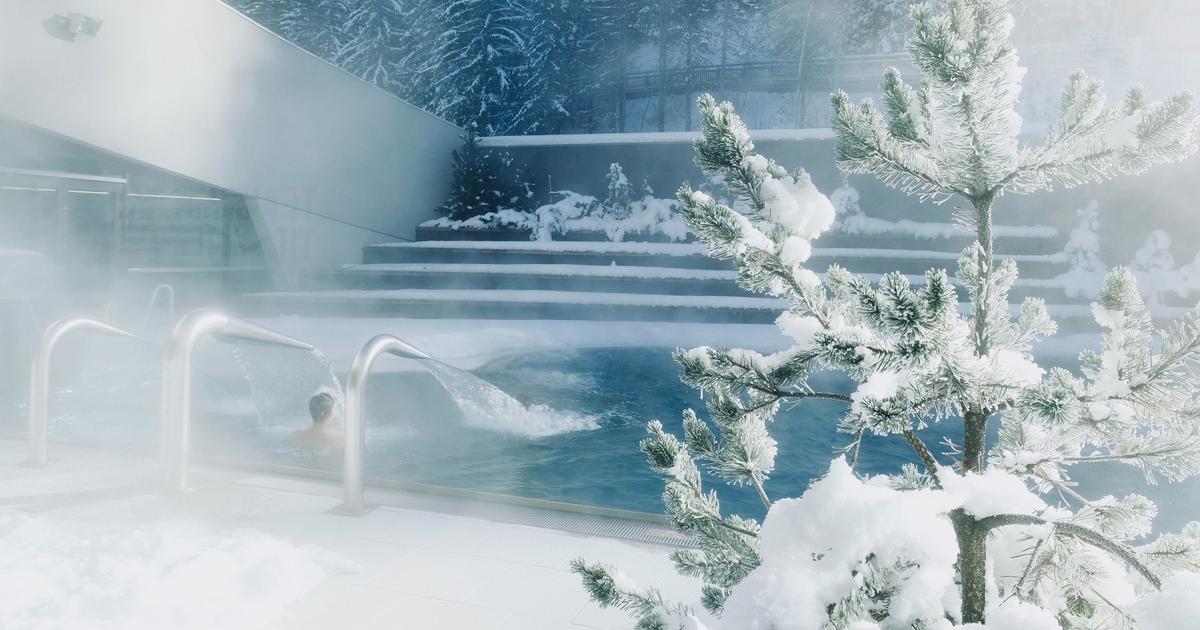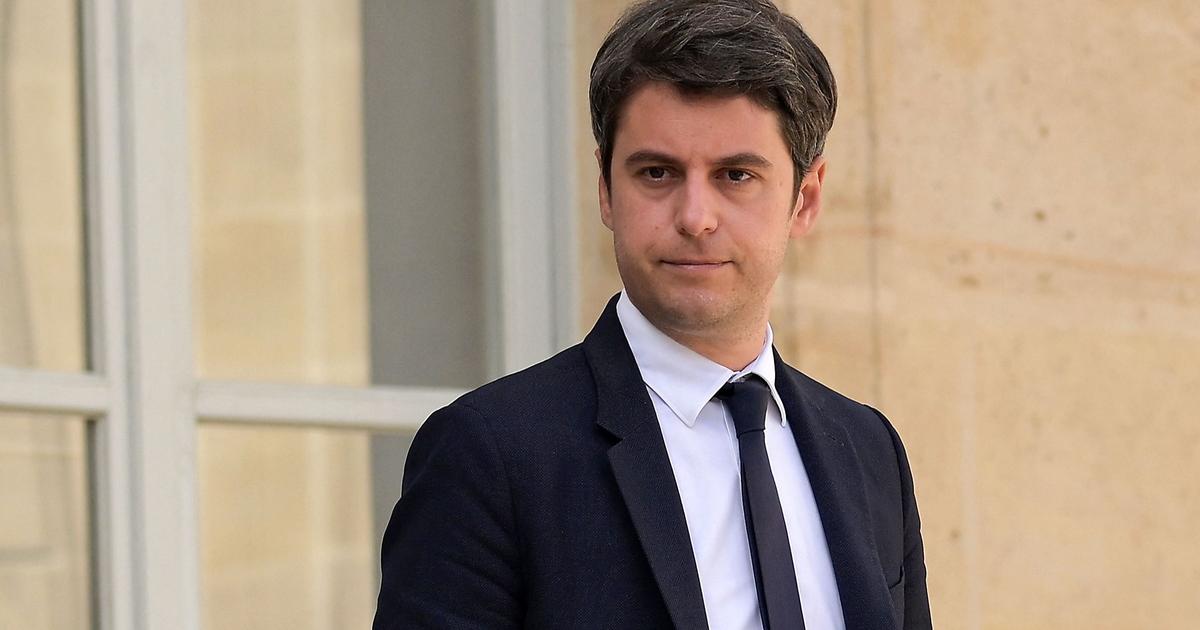In the Finnish city of Rovaniemi Christmas does not end at the beginning of January.
The ubiquitous references to Santa Claus, snow, fir trees, street lighting and the few hours of sunshine last for many more weeks.
After two very complicated winters due to the pandemic, the authorities welcomed the tens of thousands of tourists who arrived in December with enthusiasm, but also with fear: a blackout could plunge the city into chaos in the middle of high season.
Hotels now have free rooms again and there are no waiting lists in restaurants, but the risk of being left in the dark has not dissipated, despite the efforts of citizens to reduce energy consumption.
"If necessary, I'll have the house at 10 degrees and I'll sleep in a bag, but don't take away our saunas," says Eero Koskinen, a university student,
Finland is at the apex of the European energy crisis, and the northern third of the country, where Rovaniemi (53,000 inhabitants) is located, is the area where the risks are greatest for the population.
Located six kilometers south of the Arctic Circle and with an average annual temperature of one degree, this picturesque town has been prepared for months to deal with a situation of energy shortage, both with intentionally designed short blackouts, and with the possibility of total disconnection and indefinite power supply, which would leave the city without internet or telephone connection, streets in the dark and pipes burst due to freezing.
“We have bought two high-power generators, which are very difficult to find in Europe today,” says Johanna Aho, the municipal Risk Management officer.
As soon as you leave Rovaniemi, you can perceive a slight scent of pine and absolute silence.
Around the capital of Finnish Lapland – the most sparsely populated region in the EU – stretch thousands of square kilometers of snow-covered coniferous forests where reindeer and moose roam free.
The municipality, which has an extension comparable to that of the Community of Madrid, includes 50 villages, some with a few dozen inhabitants.
In these remote and tiny towns, all homes are required by law to have an alternative method to electric heating.
And food is not a problem either.
"Practically, all people hunt, they have accumulated food in winter," explains Risto Varis, in charge of Education and Social Services.
“The freezer wouldn't work,
In the Rovaniemi housing blocks it would be very difficult to keep the rooms at a bearable temperature.
“If a blackout came with extreme and prolonged cold, with temperatures below 40 below zero, it would probably be necessary to evacuate part of the population,” Varis says.
Hospitals would function thanks to their backup system, although they might have to limit themselves to attending to the most urgent cases.
“We have plans to be able to supply our water with traditional methods if necessary,” says Aho.
And the emergency services have diesel tanks;
gas station pumps would be unusable.
In a country at the forefront of education, the option of closing schools is only contemplated in case of extreme necessity.
A Rovaniemi school was recently successfully tested on how to spend a day without electricity.
"If the toilets stopped working, it would be a problem," says Aro.
"It would also be necessary to maintain a childcare service," adds Varis.
“It will be necessary to take care of young children who have their parents working in key positions,” he argues.
years of preparation
Despite being the EU country with the highest risk of blackouts this winter, Finland is also probably the most prepared for this situation.
The Ministry of Defense has been publishing an annual brochure for a decade in which, among other things, it urges the population to have enough food, water and medicines stored for at least 72 hours during the coldest months, and a radio that works with batteries.
In 2014, Rovaniemi was disconnected for a few hours from the power grid to examine what the complicated and dangerous process – due to fire risk – of suddenly restoring power after a blackout would be like;
an unparalleled essay that served to make several corrections and face the current shortage with greater confidence.
The Finnish government warned the population in July of possible blackouts this winter.
“A year ago we thought we were in a better position than ever, but Russia's attacks on Ukraine changed everything,” Tuomas Rauhala, vice president of Fingrid, the operator of the national electricity grid, explains in his Helsinki office.
The Russian government suspended the sale of electricity and gas to Finland in May, in response to its request to join NATO.
“If we have several days in a row in which the entire country is below 15 degrees below zero, the situation is going to be very complex,” adds Rauhala.
The Executive launched a campaign a few months ago to make citizens aware of the need to reduce consumption.
Some of the main recommendations are: reduce the time in the shower, go up and down the stairs even if there is an elevator, use the bike more and public transport, clean the ice from the windows of electric cars -a third of the total- with scrapers and not with heating, or reduce the use of saunas, a delicate but necessary request.
In Finland there are more than three million saunas, more than one for every two inhabitants.
Its use is not considered a luxury;
They are an essential part of the culture of the Nordic country, a tradition with millennial roots that today —almost all of which are electric— consumes more energy in the country than kitchens or home lighting.
In sports centers
The result of the efforts of the population has been evident: last December 10% less energy was consumed than in 2021. "It is not an exaggeration to say that thanks to this reduction we have avoided blackouts so far," he maintains by email. email Kati Laakso, communication manager for the energy saving campaign.
Almost 90% of Finns have taken measures to consume less, although exorbitant bills have become another incentive.
Many companies have also contributed their grain of sand.
One of Rovaniemi's majors, Lappset, a manufacturer of recreational and sports equipment for municipal parks, halted production for two weeks solely to reduce energy consumption.
Some municipalities turn off urban lighting at dawn.
In Rovaniemi,
Two-hour scheduled outages
The priority for Fingrid is to avoid an indefinite blackout throughout the country, and its strategy focuses on being able to anticipate to schedule two-hour blackouts that prevent the system from collapsing.
Some intentional cuts in electricity supply of which an attempt would be made to notify the population at least 18 hours in advance, through public radio and television, mobile phone applications, or even postal mail for the elderly population in remote areas.
Some turbines at the Olkiluoto-3 nuclear power plant, in October 2021.
Much of the energy Finland consumes is imported, mainly through Sweden.
The Olkiluoto-3 nuclear power plant, the largest in Europe, should reduce foreign dependence, but its commissioning is almost 14 years behind schedule;
March 8th is the umpteenth date set for the plant to start producing.
Pending more nuclear power, wind has become a lifeline.
After a few weeks with abnormally high temperatures and strong gusts of wind, the production of the wind farms has been higher than expected.
However, the waves of extreme cold in Finland do not usually bring any wind, so Fingrid does not rely on this type of energy for a crisis situation.
In one of the countries that is fighting most actively against climate change, this winter the high temperatures are welcome, which have already caused an extraordinary thaw in some areas.
The weeks advance and the risk of blackouts is reduced, but it will remain at least until mid-March, a month for which there are records of less than 40 degrees below zero.
Ruohala hopes that next winter the situation will no longer be critical, while in Rovaniemi they hope that next Christmas tourists will fill the city to take pictures with Santa Claus, observe the northern lights or practice winter sports, but finally without viruses or shortages energetic.
Follow all the international information on
and
, or in
our weekly newsletter
.
Subscribe to continue reading
Read without limits
Keep reading
I'm already a subscriber

/cloudfront-eu-central-1.images.arcpublishing.com/prisa/YF7ZAEUFHRG65NNBV5RY6Z3QRM.jpg)













